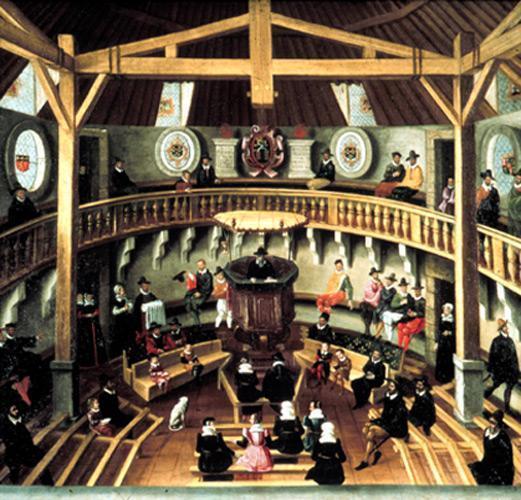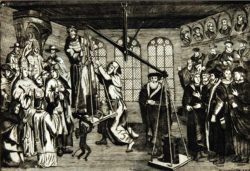A new relationship to God
In the XVIth century, it appeared highly necessary to reform the Catholic Church. But how was this to be done and to what extent ?
Theological debates which led to a reorganization of the Churches
Theological debates led to several different trends within the Reform Movement :
- The Reform of ecclesiastical authority : there were now two trends : Lutheran and Reformed
- The radical Reform Movement
- Reformism with the Catholic counter-reform.
Important differences came to light concerning man’s relationship to God, salvation, the forgiveness of sins, the way in which the Bible was understood and interpreted.
The kingdom of France remained predominantly catholic. However, the Reform Movement continued to develop in spite of religious persecution : the reformed Churches were set up from 1555 onwards. They were inspired by Calvin’s ideas, established a confession of faith and church discipline, so their communities were well organized on a local, provincial and national level.
The act of worship in the temple used Calvin’s liturgy, the central part of the service was the pastor’s sermon. Holy Communion was only celebrated four times a year, with both wine and bread being distributed. People also held services in their homes.
Protestants stood out from other believers in two different ways : both in their direct relationship to God, excluding the intermediary of saints or clergy and also in the way they led their private lives.
Associated notes
-

Reforms : theological debates
The desire to reform the Church was very widespread in Europe in the 16th century, but there was no agreement on what changes to promote: how to reform, how far?... -

Church organisation
Initially, Reformed Churches were not institutionalised, but as from 1555, throughout Kingdom of France, they progressively conformed to the pattern Calvin had organised in Geneva. -

The reformed service of worship and the sacraments
The central part of the service of worship was the sermon, based on a text from the Bible. Baptism and the Lord’s Supper were celebrated during the service, the latter... -

On being a Protestant in 16th century in France
During the second half of the 16th century, many reformed churches were created in France. Calvinist catechism and discipline brought about a new kind of person: a Protestant person.

